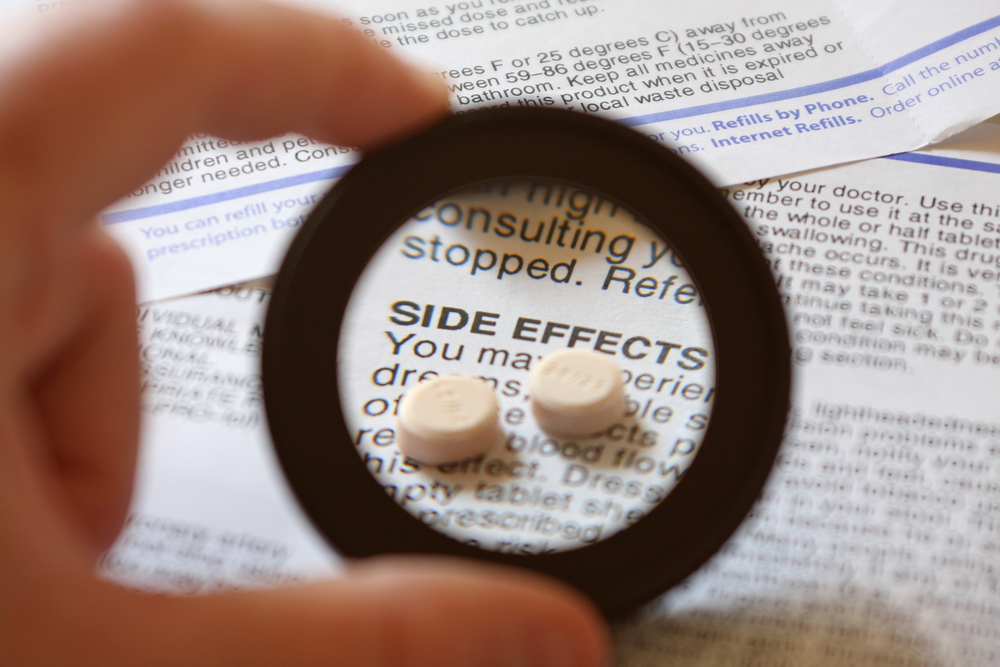Suboxone Side-Effects: A Comprehensive Guide
According to preliminary data from the Centers for Disease Control and Prevention (CDC), more than 70,200 people in the U.S. are estimated to have died from drug overdoses in 2017, making this the worst year of overdoses in U.S. history. But medication-assisted treatment (MAT) can help wean people off these deadly drugs. Suboxone, in film form, is one option. It’s classified as a schedule three prescription drug. This means that it has an accepted medical use, but it may cause physical or psychological dependence. Becoming educated on the medication and the potential side-effects is imperative to a safe withdrawal process.
What is Suboxone?
Suboxone is a brand-name prescription drug. It’s the combination of Buprenorphine and naloxone and it’s a controlled substance. There are also versions of the medication that just contain Buprenorphine. Both medications are usually taken under the tongue.
- Buprenorphine’s Role: Buprenorphine is in a class of medication called opioid partial agonist-antagonists. In simple terms, it helps people reduce or quit their use of heroin, opioid drugs, and narcotic pain killers. The effects of Buprenorphine can last as long as 24 hours.
- Naloxone’s Role: Naloxone is classified as an opioid antagonist. This means it blocks the effects of opioid drugs. It’s included in Suboxone solely to help prevent abuse of the medication. Naloxone is designed to prevent you from experiencing a high from other opiates.
The combination of buprenorphine with the opioid antagonist naloxone further increases its safety and decreases but does not eliminate the likelihood of diversion and misuse.
Studies from the Substance Abuse and Mental Health Service Administration (SAMHSA) show that Suboxone is effective for reducing opioid misuse. The medicine reduces cravings and the pain of withdrawals. This combination drug is used as part of a treatment program that typically includes counseling, lifestyle changes, and other interventions. How well Suboxone performs is partly assessed based on how long people stay in treatment.
Under the Drug Addiction Treatment Act of 2000 (DATA 2000), qualified U.S. physicians can offer buprenorphine for opioid dependency in various settings, including in an office, community hospital, health department, or correctional facility.
What Are the Side Effects of Suboxone?
Although your healthcare provider should run tests before you start taking and while you are taking Suboxone, mild or serious side effects can occur. Some of these side effects may go away within a few days or a couple of weeks. If they become more severe over time or don’t go away, talk to your healthcare provider. According to the CDC, some of the most common side effects are:
- Headaches: This is one of the most common side effects and generally goes away with continued use of the medication.
- Constipation: Studies show this occurs in 12 percent of people taking Suboxone. Constipation is common and should not last after continuous use of the medication. If it does, consult your healthcare provider.
- Sweating: On average, sweating occurs in 14 percent of people taking Suboxone and gradually goes away with continued use of the medication.
- Insomnia (trouble sleeping): Lack of sleep can lead to dizziness and problems with coordination.
- Fatigue: Despite the fact that the drug causes insomnia for many users, it can also cause fatigue.
Serious side effects from Suboxone aren’t common but can occur. Consult your healthcare provider right away if the following occurs:
- Respiratory Problems/Depression: Respiratory depression is a condition in which breathing becomes too shallow or slow, causing a lack of oxygen in the body. Respiratory depression is perhaps the most severe of the side effects. Misuse or overdose of Suboxone can increase the chances for severe respiratory depression. Respiratory problems are more likely when Suboxone is used together with other drugs such as alcohol, Ativan, Valium, or Xanax.
- Liver Problems: You may be experiencing liver problems if your skin or the white part of your eyes begin to turn yellow. You may also have stomach pain, dark urine, and lighter stools. Liver problems are the most monitored by physicians.
- Allergic Reactions: If you develop a rash, hives, swelling of the face, or you start wheezing, you may be allergic to the medications.
- Decrease in Blood Pressure: You may have low blood pressure if you feel dizzy when you get up too fast from sitting or lying down.
- Fertility Problems; Long-term use of Suboxone may cause fertility problems in males and females. If this is a concern, talk to your healthcare provider before taking the medication.
- Physical Dependence: Unfortunately, Suboxone can be addictive for many people. Suboxone has opioid effects, including mild euphoria, and long-term use of it can lead to physical and psychological dependence. Suboxone dependence can cause drug-craving and drug-seeking behavior, which may lead to misuse and/or abuse.
What Precautions Should Be Taken?
Before taking Suboxone, inform your healthcare provider about all your medical conditions and all the medications you take, including prescription and over-the-counter medicines, vitamins and herbal supplements. Do not begin new medications without consulting your health care provider.
SAMHSA indicates in all their studies that Suboxone should not be injected. Injecting the medication will trigger immediate opiate withdrawal symptoms which are extremely uncomfortable. You should not drink alcohol while using Suboxone, as it can lead to loss of consciousness or even death.
Suboxone film isn’t for occasional or “as needed” use. Do not stop taking the medication without talking to your healthcare provider first.
Conclusion
These are not all the possible side effects. Consulting your health care provider for medical advice about side effects is imperative to ensure a safe dosage of Suboxone film.




Leave a Reply
Want to join the discussion?Feel free to contribute!